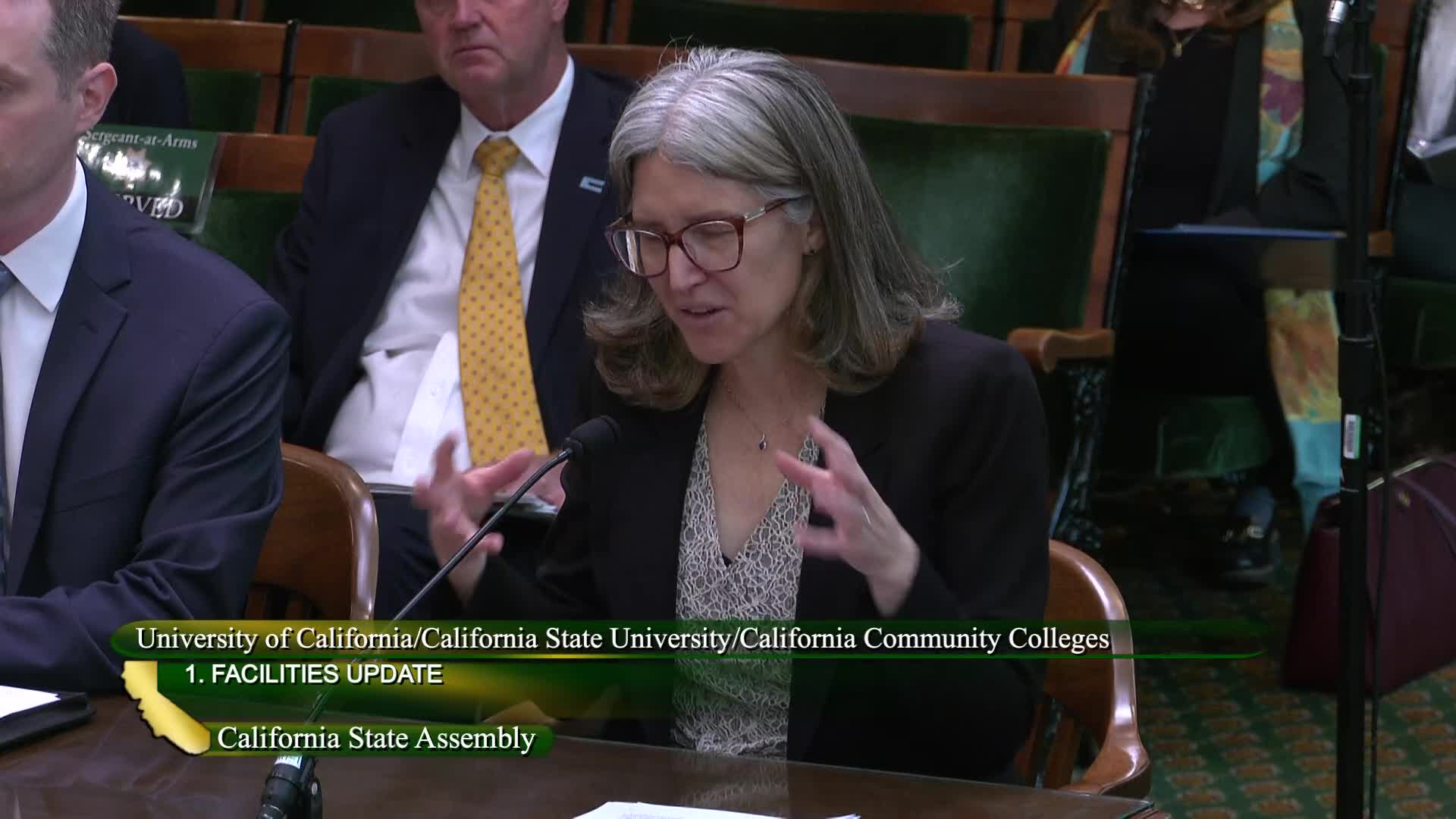California universities confront $33B infrastructure funding crisis in legislative hearing
May 06, 2025 | California State Assembly, House, Legislative, California
This article was created by AI summarizing key points discussed. AI makes mistakes, so for full details and context, please refer to the video of the full meeting. Please report any errors so we can fix them. Report an error »

In a pivotal meeting held at the California State Capitol, members of Assembly Budget Subcommittee No. 3 on Education Finance gathered to address the pressing infrastructure needs of the state's higher education institutions. The atmosphere was charged with urgency as representatives from the University of California (UC), California State University (CSU), and California Community Colleges presented their cases for increased funding to tackle aging facilities and meet growing enrollment demands.
Nathan Brostrom, Chief Financial Officer for the UC system, painted a stark picture of the current state of university infrastructure. He emphasized that without additional resources, including general obligation bonds and deferred maintenance funding, the UC system would struggle to provide safe and adequate facilities for its students and staff. With nearly 6,000 buildings and a staggering $8.5 billion in deferred maintenance projects, the need for action is critical. Brostrom highlighted that many of the university's facilities are over 30 years old, and the backlog of necessary seismic renovations has reached $13 billion.
The CSU system echoed these concerns. Paul Gano, Assistant Vice Chancellor of Capital Planning, noted that the CSU has seen a dramatic decline in state funding for capital projects, with no new voter-approved general obligation bonds in nearly two decades. The current five-year capital plan identifies nearly $31 billion in project needs, with a deferred maintenance backlog exceeding $8 billion. Gano stressed the importance of consistent funding to address critical infrastructure deficiencies and ensure the safety and accessibility of campus facilities.
Chris Ferguson, Executive Vice Chancellor of the California Community Colleges, brought attention to the staggering $33.5 billion in unmet facilities needs across the community college system. With over half of the facilities aging beyond 25 years, Ferguson underscored the necessity for modernization projects that support a diverse range of educational programs, from STEM to vocational training.
As the meeting progressed, it became clear that all three segments of California's higher education system are grappling with similar challenges: aging infrastructure, insufficient funding, and the urgent need for strategic investments. The discussions highlighted a collective call for legislative support to secure funding that would not only address immediate needs but also lay the groundwork for future growth and sustainability.
The implications of this meeting extend beyond the walls of the Capitol. As California's population continues to grow, the demand for accessible and modern educational facilities will only increase. The decisions made in these budget discussions will shape the educational landscape for years to come, impacting students, faculty, and communities across the state. The urgency for action is palpable, and the time for investment in California's educational infrastructure is now.
Nathan Brostrom, Chief Financial Officer for the UC system, painted a stark picture of the current state of university infrastructure. He emphasized that without additional resources, including general obligation bonds and deferred maintenance funding, the UC system would struggle to provide safe and adequate facilities for its students and staff. With nearly 6,000 buildings and a staggering $8.5 billion in deferred maintenance projects, the need for action is critical. Brostrom highlighted that many of the university's facilities are over 30 years old, and the backlog of necessary seismic renovations has reached $13 billion.
The CSU system echoed these concerns. Paul Gano, Assistant Vice Chancellor of Capital Planning, noted that the CSU has seen a dramatic decline in state funding for capital projects, with no new voter-approved general obligation bonds in nearly two decades. The current five-year capital plan identifies nearly $31 billion in project needs, with a deferred maintenance backlog exceeding $8 billion. Gano stressed the importance of consistent funding to address critical infrastructure deficiencies and ensure the safety and accessibility of campus facilities.
Chris Ferguson, Executive Vice Chancellor of the California Community Colleges, brought attention to the staggering $33.5 billion in unmet facilities needs across the community college system. With over half of the facilities aging beyond 25 years, Ferguson underscored the necessity for modernization projects that support a diverse range of educational programs, from STEM to vocational training.
As the meeting progressed, it became clear that all three segments of California's higher education system are grappling with similar challenges: aging infrastructure, insufficient funding, and the urgent need for strategic investments. The discussions highlighted a collective call for legislative support to secure funding that would not only address immediate needs but also lay the groundwork for future growth and sustainability.
The implications of this meeting extend beyond the walls of the Capitol. As California's population continues to grow, the demand for accessible and modern educational facilities will only increase. The decisions made in these budget discussions will shape the educational landscape for years to come, impacting students, faculty, and communities across the state. The urgency for action is palpable, and the time for investment in California's educational infrastructure is now.
View full meeting
This article is based on a recent meeting—watch the full video and explore the complete transcript for deeper insights into the discussion.
View full meeting
